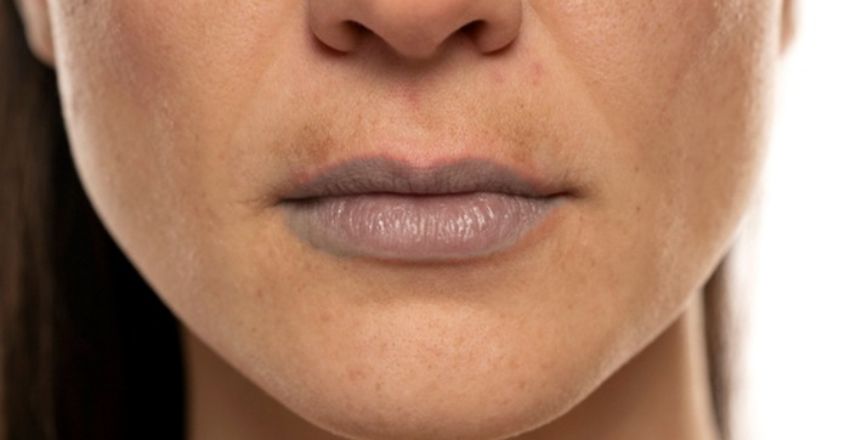Contact Info
-
Indirapuram: 080768 46266
-
Noida: 088105 60369
Anugraha Skin
Are you constantly trying to hide the dark color of your lips? If so, you may be dealing with lip hyperpigmentation. Full, pink lips with a well-defined cupid’s bow are key attributes of a youthful and attractive appearance. But the lips, being delicate, are prone to changes like darkening and dryness.

Hyperpigmentation of the lips is a common condition that arises for various reasons. It typically isn’t harmful, occurring when an excess of melanin deposits in the skin, causing dark patches.
For some, this condition can be a cosmetic concern, especially when the discoloration is noticeable or uneven. While there are many beauty products that claim to lighten dark lips, not all are effective. At Anugraha Skin & Laser Clinic, we offer effective lip pigmentation treatments in Noida to address the issue at its root, not just cover it up.
Lip pigmentation occurs when certain areas of the lips develop a darker color compared to surrounding areas. This can appear as a gradual darkening of the lips or localized dark spots. Though it's usually harmless, it’s important to consult a dermatologist if you notice any unusual changes, as this could sometimes indicate an underlying health condition.
Hyperpigmentation on the lips happens when there’s an overproduction of melanin, the pigment responsible for skin color. As this excess melanin accumulates, it can form patches, spots, or cause overall darkening of the lips. The severity of the darkening depends on the amount of melanin produced and your natural skin tone. Here’s a closer look at some common causes of uneven lip darkening:
Genetic lip pigmentation can’t be prevented, but you can take steps to prevent discoloration caused by external factors. The best way to prevent lip hyperpigmentation is to protect your lips from the sun, avoid smoking, and use hypoallergenic products if you have sensitive skin. A regular lip care routine that includes moisturizing, gentle exfoliation, and daily SPF protection is essential to maintaining healthy lips and preventing darkening.
Treating lip pigmentation requires a careful approach, as the lips are delicate and functional. Below are some common treatment options:
Several topical treatments can help lighten hyperpigmented lips. However, these should be used cautiously and preferably under medical guidance.
For persistent hyperpigmentation, professional treatments like chemical peels and laser therapy can be effective. Trained dermatologists should only perform these methods to ensure safety and efficacy.
The cost of lip pigmentation treatment in Noida depends on several factors, including the treatment type and the severity of the pigmentation. Professional treatments such as laser therapy or chemical peels may be more expensive than topical treatments, but they often provide more noticeable and lasting results.
Dr. Monica Bambroo offers specialized care for lip pigmentation, providing effective treatments tailored to your specific needs. With her expertise and personalized approach, she ensures that your treatment is both safe and effective.